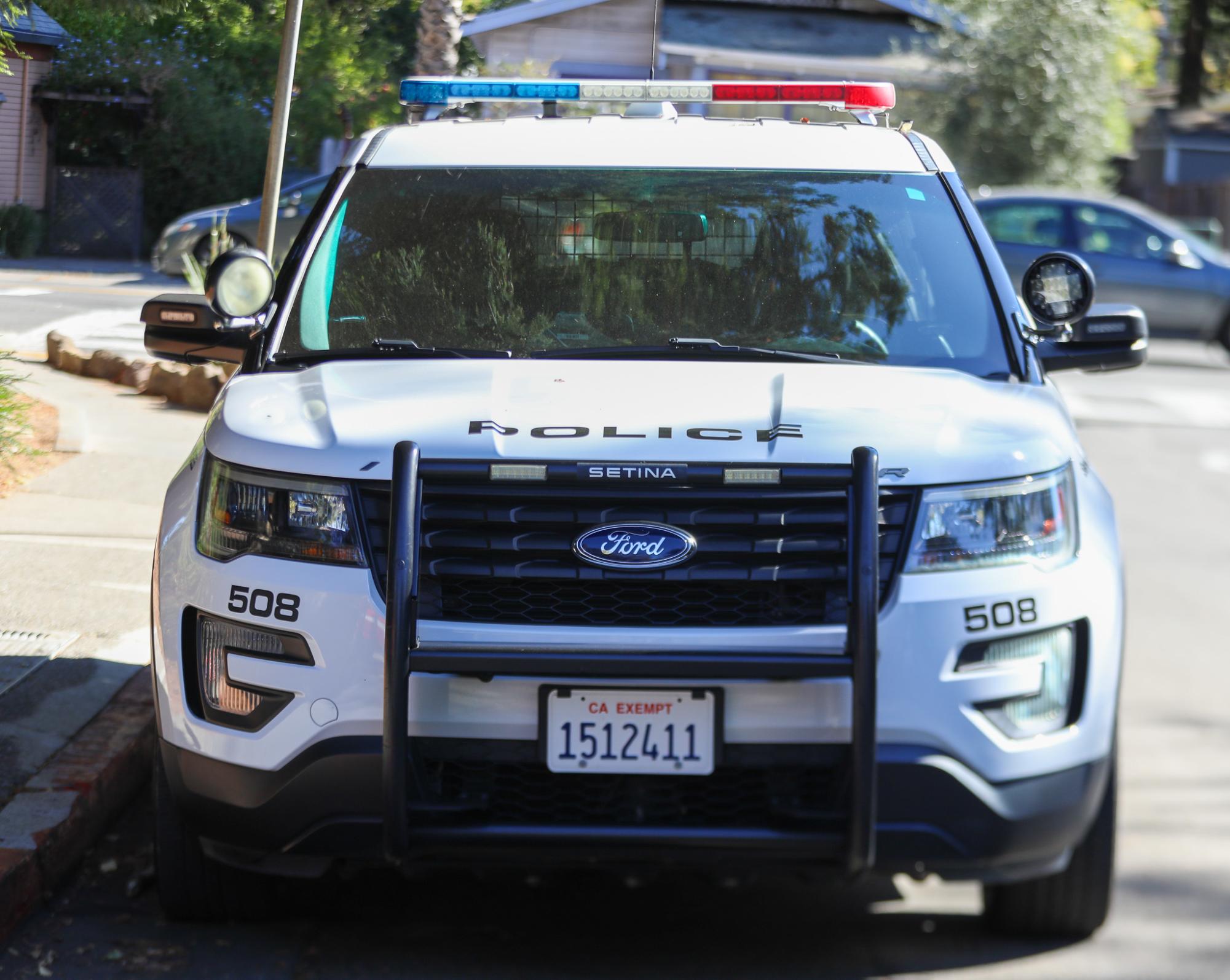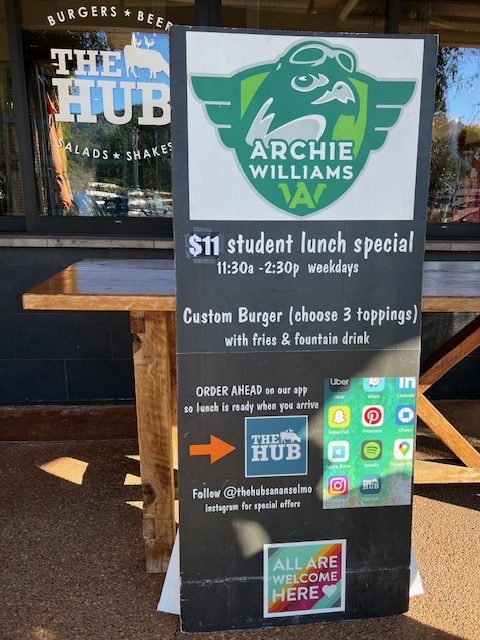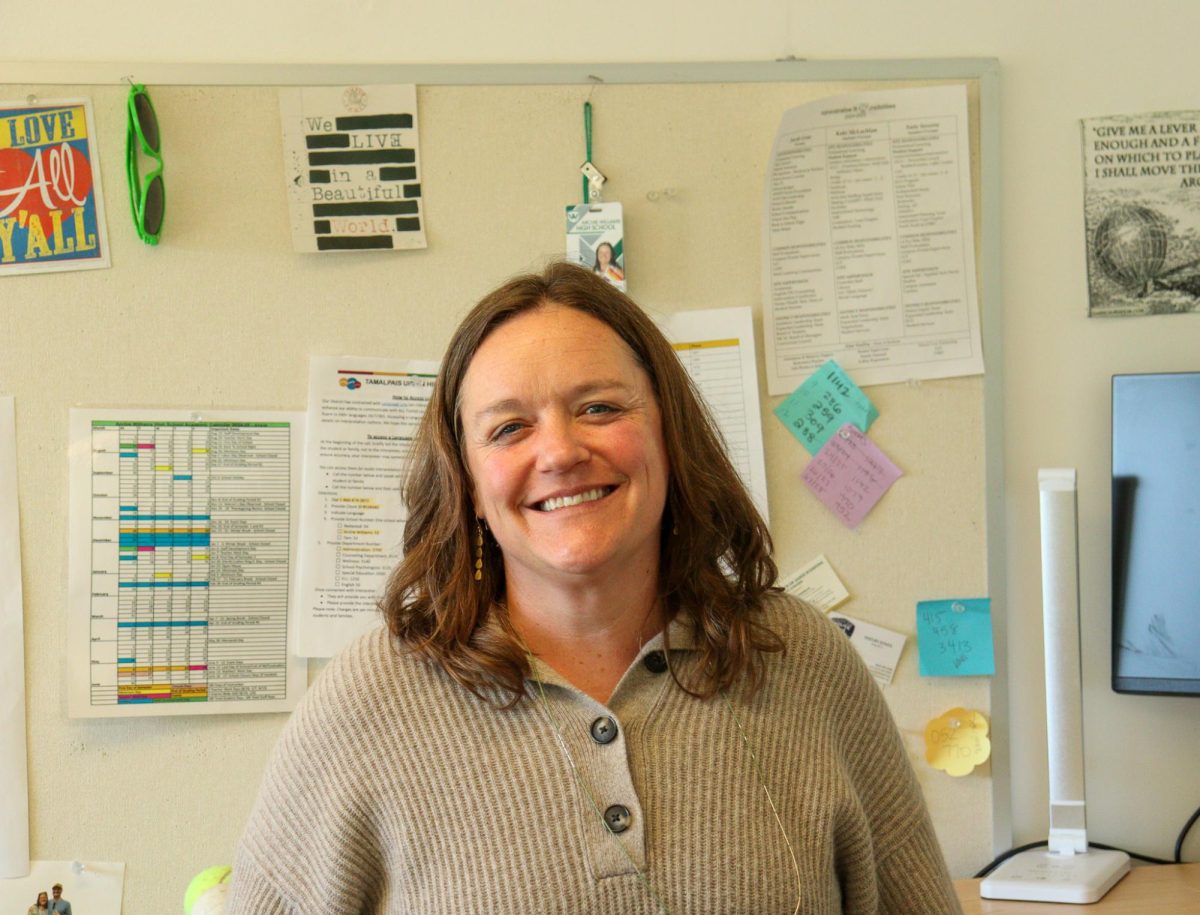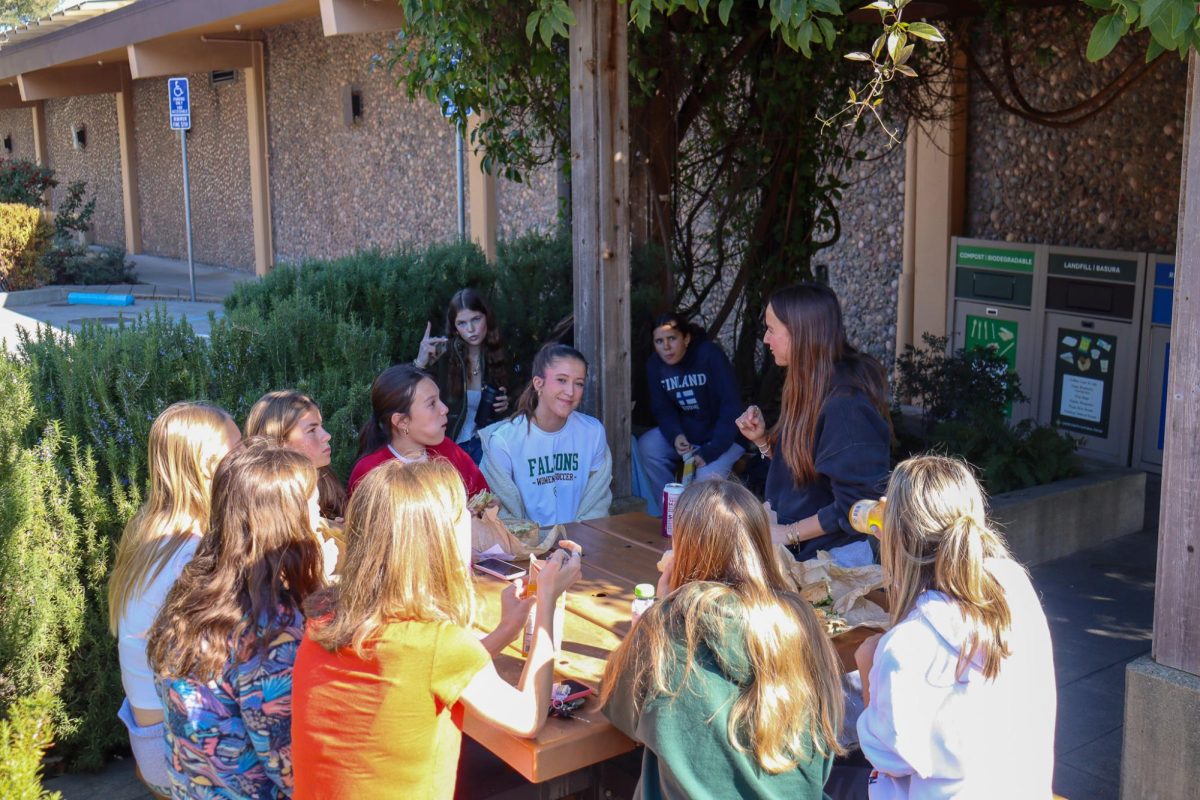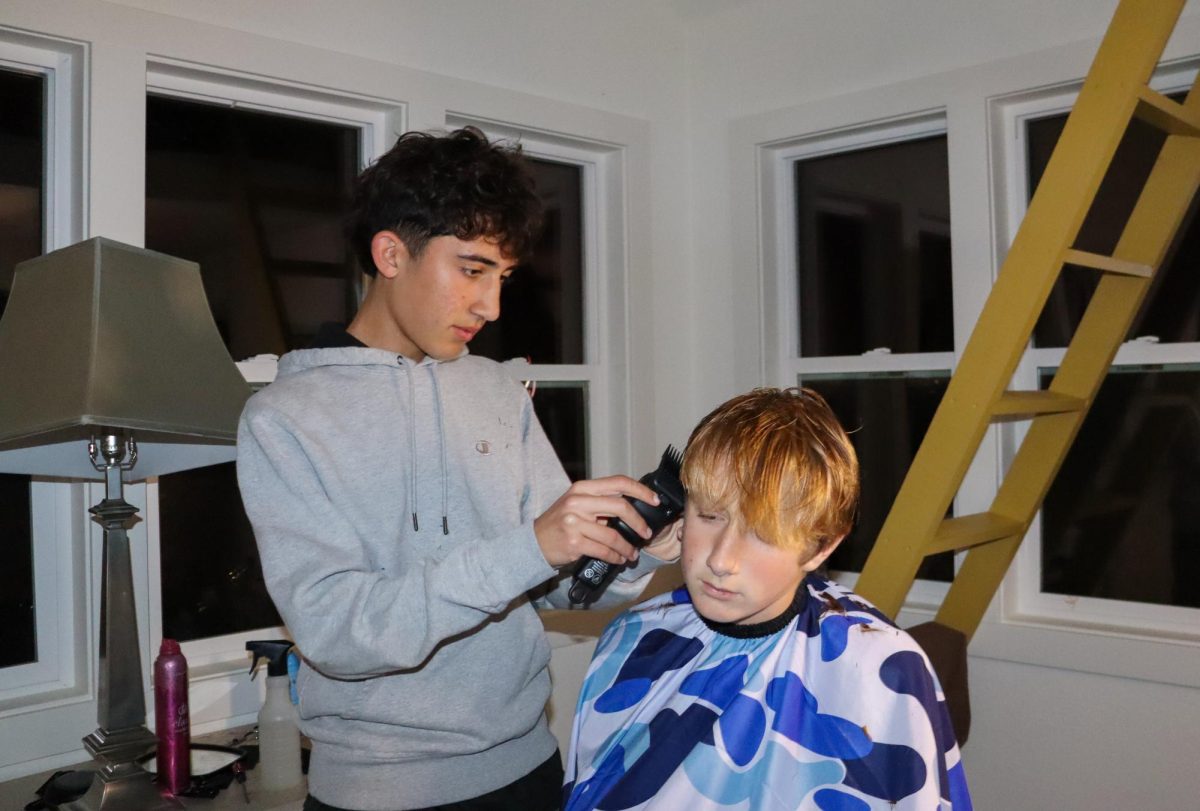On Sept. 13, at approximately 7:30 a.m., the Tamalpais Union High School District (TUHSD) received a threatening text message from an unknown source stating they had intentions to bomb a TUHSD school. Superintendent Tara Taupier promptly reported it to the Central Marin Police Authority. TUHSD collaborated with law enforcement to determine whether the threat was legitimate and ultimately decided to close school for the day.
When the district went into evacuation, school had not yet started for the day. However, there were Archie Williams students present on campus for early morning sports practices. Archie Williams staff immediately evacuated those students, as well as inessential staff. Administrators and campus assistants stayed on-site to ensure that no additional students entered the campus until 2:00 p.m., when the evacuation order was lifted.
Archie Williams Principal Jacob Gran stayed on campus with his staff throughout the evacuation, communicating with students and families through ParentSquare.
“My role as principal is really just to execute. I need to make sure that we are following the protocol for an evacuation and to communicate with families as well that there is an evacuation. In this instance, what we did was using ParentSquare, sending a community-wide message,” Gran said.
Gran also kept in contact with Taupier and her cabinet regarding law enforcement’s progress in searching the school for explosives, using an app called Share911, which helped all district schools stay in contact.
Share911 is an emergency communication platform that all Archie Williams faculty have on their phones. Any staff member can report an emergency situation to the main office and to the district via this platform. Archie Williams administration periodically stayed in contact with the district through Share 911, keeping them notified about the details of the campus evacuation.
Assistant Superintendent Wesley Cedros also utilized the Share911 app to stay in constant contact with TUHSD personnel. Cedros primarily served as an advisor to Superintendent Tara Taupier, helping her carry out the evacuation protocols. One of his responsibilities is to stay in touch with law enforcement and clear confusion in the chance of an evacuation, making the process as smooth and safe as possible.
“We worked with [law enforcement] pretty cooperatively. We were in constant communication with them at length. So once they took control of the situation, we followed their lead. There were officers at all sites sweeping buildings [to make sure] there wasn’t anything unusual or out of the ordinary,” Cedros said.
Assistant Principal Nate Severin helped staff follow protocol and communicate the evacuation to families. To Severin, staying in contact with the district remains critical to ensuring a smooth evacuation. Campus assistants also aided administration by helping sweep the school for students, making sure that none entered school grounds.
“It’s all about communication, and so even with the PA [announcement] or a notification, or an email, you always have to assume that maybe people didn’t see or hear it… Then it’s [essential to] go out and make contact with those people if we need to verbally, face-to-face,” Severin said.
The TUHSD threat report line received the anonymous message early in the morning containing one short sentence: “I’m gonna bring a bomb to school on September 13th.” Due to the severity and non-specificity of the threat, law enforcement and TUHSD agreed to shut down the district that day.
While the threat might have been vague, it communicated a menacing message of violence to Archie Williams students. Its profound impact, rooted in fear, spread across campus in the days following. In the wake of the evacuation, Archie Williams Peer Resource (PR) students worked to deal with their anxiety through having honest conversations about how the threat of violence made them feel.
Junior and first year PR student Tessa Davis felt unsettled and annoyed, rather than scared about the threat. Tessa believes that there was a wave of misinformation going around, specifically surrounding the credibility of the threat. She also experienced confusion surrounding the magnitude of the threat, and at the time she was left wondering if there was something much larger going on.
“Some people were probably more unsettled than scared, because I feel like Marin is quite a safe place when it comes to that sort of violence. I don’t remember ever hearing about a shooting that had actually occurred at Marin high school at least in the past ten years,” Tessa said.
Sophomore Ollie Cardwell, in their first year of PR, believes that reflecting on how threats of violence make them feel with their friends, can help students work through their anxiety. They believe that as long as students are honest with each other and do not make light of the situation, then these conversations can be refreshing.
“Discussing with friends and having an open conversation about this kind of stuff is always nice. Try not to joke about it when talking about it too. It makes it feel more real, but also gets the real feelings out, and then you’re not holding it inside, not bottling it up,” Ollie said.
Ollie is also bothered by the fact that threats of violence such as these are getting more common throughout America. Because of this, Ollie wants to be able to decrease student stress and anxiety by supporting students during this time of uncertainty and making them feel welcome on campus.
“I was angry that [threats of violence] seems to be a common occurrence in schools in the United States, but it also made me want to be able to do something. If we’re here for students on campus more, then maybe there would be less students who don’t feel welcome,” Ollie said.
Threats of violence can affect students in a variety of ways. Discover Magazine shows how even sporadic threats of violence can have devastating long-term psychological effects, striking fear into the hearts of communities and creating uncertainty and panic. When these threats are credible committed against a school, PTSD, trauma, decrease in engagement in classes, depression, and chronic absences are all common in the wake of these traumatic events.
TUHSD was not the only district to receive a threat of violence Sept. 13; multiple threats of violence occurred in California. An elementary school in Tracy also received a threat, alongside two Sacramento County schools. More threats occurred in Modesto, and while they weren’t identical to the ones in Sacramento and Tracy, they were all received on the same day and proved to not be credible.
Springfield, Ohio also received multiple bomb threats Sept. 12 that were concerning enough to shut down schools, as well as multiple government offices. The actual threat targeted Haitian immigrants living in Springfield, who former President Donald Trump accused of eating residents’ pets. This attention regarding Springfield’s Haitian immigrants put a large target for violence on the city’s back.
Regardless of how a school discovers a violent threat, often they are traced back to social media. The threats in both Modesto and Sacramento originated from images and messages on social media. ProPublica reported that “social media is an accelerant to violence,” going as far to say that social media fuels homicide for young Americans.
Beyond Archie Williams, threats of violence directed towards children are a recurring issue in the U.S. The Sandy Hook Promise states that each day 12 children die from gun violence, and the 2023-2024 school year saw a 49 percent raise in the number of violent incidents committed in schools. Overall, the number of active shooter threats in the US increased by 60 percent in 2023, so with these instances on the rise, the FBI will continue to search for ways to better protect schools from random acts of violence.
“The FBI is committed to working with its partners to protect schools, workplaces, houses of worship, medical facilities, transportation centers, government facilities, other public gathering sites, and communities,” the FBI said in a statement regarding FBI active shooter safety resources.
While the threat on Archie Williams was of a physical nature, Archie Williams Wellness Coordinator Katrina Southard sees firsthand the effects of a potential random act of violence such as this on students’ mental health. Southard believes that these incidents can be unnerving for students, consequently causing them to feel panicked and anxious. When dealing with students in a state of panic, Southard has specific strategies to help ground them.
“When a student is feeling really panicky and having panic attacks, or is currently in a panic moment, we will usually try to ground them into their bodies so that they’re breathing steadily. [Now they will be] able to access a deeper part of their brain, as opposed to the fight or flight part of their brain,” Southard said.
Archie Williams Wellness outreach specialist Beatrix Berry employs other strategies when dealing with students going through panic and anxiety around traumatic events. She believes that part of helping students deal with intense emotions is helping them walk through their fears. Berry sees importance in validating students’ fears but also demonstrating that if there was a threat of violence on campus, TUHSD would do everything in their power to address any threats and ensure students are safe.
“Validating what [students] are feeling, which is really real and really scary, and we’re seeing what it is happening, so validating that there is real fear is important. We do practice these lockdown drills, we do have people walking through our campus… We are prepared, and hopefully [that will be] something that would ease [students’] anxiety a little bit,” Berry said.
TUHSD and Archie Williams’ collaboration was critical to pull off the evacuation, as by staying in constant communication, Gran, Severin, and Cedros were able to follow protocol. As far as student mental health goes, Southard believes it is the students’ responsibility to gauge their emotions, and if a particular student’s feelings get the best of them, she thinks it is essential for them to seek help. Both Berry and Southard encourage the use of the Wellness center to cope with intense emotions regarding the bomb threat and any future threats.




